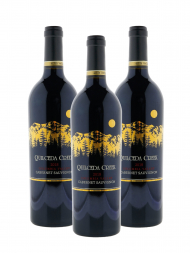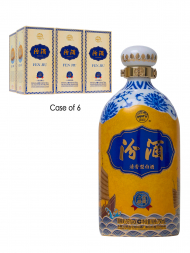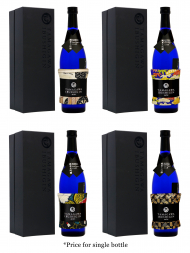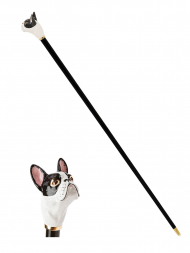Roederer Launches New Brut Nature Champagne
Louis Roederer Champagne, best known for its tête du cuvée Cristal, is launching its first new cuvée in more than 40 years, a brut nature, meaning no dosage of sugar was added to the wine after secondary fermentation. The company has introduced its Roederer Brut Nature Starck 2006 at a nighttime event in New York on Oct. 7, after parties in Paris and London in September. Philippe Starck, the well-known French designer, created the new wine's label.

"It's a big event for us," Jean-Baptiste Lécaillon, chef de cave forLouis Roederer Champagne, told Wine Spectator. "The last [new wine] was the 1974 Cristal Rosé, created by [owner and former CEO] Jean-Claude Rouzaud." Lécaillon says that current CEO Frédéric Rouzaud was the driving force behind Roederer's newest addition, much as his father was with Cristal Rosé.
"When Frédéric joined the house in 1996 it was his idea to see how far I could go in lowering the dosage on all Roederer wines – not with the idea to make a nature or an extra brut or a certain category," says Lécaillon. He slowly lowered residual sugar levels on the entire Roederer lineup, from an average (for the range) of 12 grams per liter residual sugar at the turn of the century down to 9 in recent years. "Then he asked me to go a little bit further with a special wine."
It wasn't until 2003 and the confluence of three factors that Lécaillon felt ready to attempt a low or no dosage wine. "Before 2003 I didn’t have the raw material--the grapes, the terroir, sufficient ripening with this texture—the natural ingredients that would allow me to go further with [lowering the dosage, but still in] Roederer's non-malolactic style." The 2003 growing season also found him the ideal source for such a wine—it was an excessively warm, sunny and dry year and the cool, clay soils of 25 acres of vines near Cumières yielded the fruit for the first experiment; rich fruit that expressed the ripeness of a warm vintage but also the freshness of a cooler terroir.

Lécaillon says the final ingredient was that this site was already being converted to biodynamic vineyard management. "You have a higher ripeness with biodynamics, different texture and fruit," he said. "This wine might not have been possible without biodynamics."
Around the same time, Rouzaud met Starck, a Champagne lover interested in a partnership for a new product, but only from a Champagne house with the capacity to oversee all aspects of production, from the vines to the packaging. "We had a lot of discussions, the three of us, thinking together about what an ideal Champagne would be," said Lécaillon. "It took time for me to translate the ideas.”
Ultimately, Lécaillon and his team decided to put traditional techniques for Champagne production and the Roederer style on the shelf and try something new. “The first key is the terroir—we wanted it to speak,” said Lécaillon, and to that end all 25 acres of Chardonnay, Pinot Meunier and Pinot Noir were harvested on the same day, then pressed and vinified together. “It’s completely not Champenois.”
To promote a greater textural component that would support the wine’s firm acidity, the wine saw minimal racking and spent 10 months on the lees. Bottling at lower pressure—4.5 atmospheres of pressure versus the widely used 6—also aided the wine’s texture. “Pressure and texture interact,” explained Lécaillon. “If you’re too high in pressure, you lose the texture.”
Altogether, the sum of these seemingly minor individual changes, as well as others, adds up to a marked departure for the house. “In an institution like Roederer, you spend 10 years learning from your predecessor," said Lécaillon. "You are trained, you learn, you understand the taste of the house, and your job is to reproduce it perfectly. It’s a lot of discipline, with less freedom for creation. With this cuvée, [I could] do something different.”
While the experiments began in 2003, the 2006 is the first release of the Brut Nature Starck, and I was able to include a bottle in a recent blind tasting. It’s graceful and ethereal in style, with beautiful interplay between the firm backbone of acidity, the soft, silky mousse, and the full flavor range. And while there’s a possibility the wine will be released again from the 2009 vintage, Lécaillon is quick to stress that it’s not necessarily a permanent addition to Roederer’s lineup. “It’s not a new range, which is why Philippe’s label is so important as well. What speaks is 2006 and the terroir.”
类别
| 所有类别 | [29 帖子] |
| 葡萄酒和烈性酒 | [13 帖子] |
| General | [3 帖子] |
| Wine & Liquor | [9 帖子] |
| 一般 | [4 帖子] |









